Abstract
1. The effects of intracoronary bolus infusion of hypertonic saline solution on left circumflex coronary blood flow were examined in sixteen anaesthetized and artificially ventilated pigs whilst preventing changes in heart rate and arterial blood pressure. 2. In fourteen pigs, bolus infusion of 7.5% hypertonic saline solution (2 ml within 30 s) caused a steady-state increase in coronary blood flow without significantly affecting right atrial or left ventricular pressure and its rate of rise (dP/dtmax). Infusing normal saline solution (0.9%) at the same rate and volume in seven pigs did not have this effect. 3. In five pigs, the magnitude and the duration of the response of increase in coronary blood flow were increased in a graded manner by graded increases in the concentration of the hypertonic saline solution between 2.5, 5 and 7.5%. 4. In nine pigs, the response of increase in coronary blood flow to the bolus infusion of hypertonic saline solution was not affected by the blocking agents atropine, propranolol and phentolamine, but it was completely abolished in the same nine pigs by the subsequent intracoronary administration of N omega-nitro-L-arginine methyl ester (L-NAME) which blocks the synthesis of endothelium-derived relaxing factor (EDRF) and in seven pigs by solely giving L-NAME. 5. These results showed that the intracoronary bolus infusion of hypertonic saline solution in anaesthetized pigs caused a coronary vasodilatation which involved mechanisms dependent on the release of EDRF.
Full text
PDF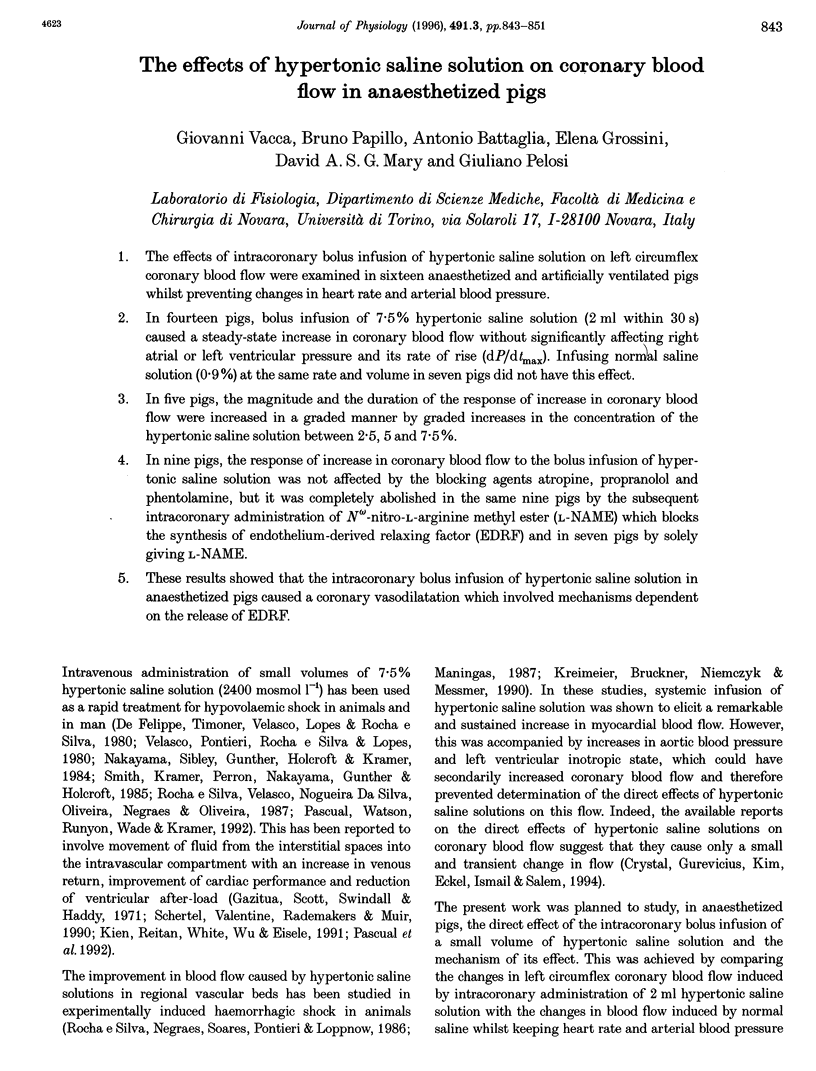

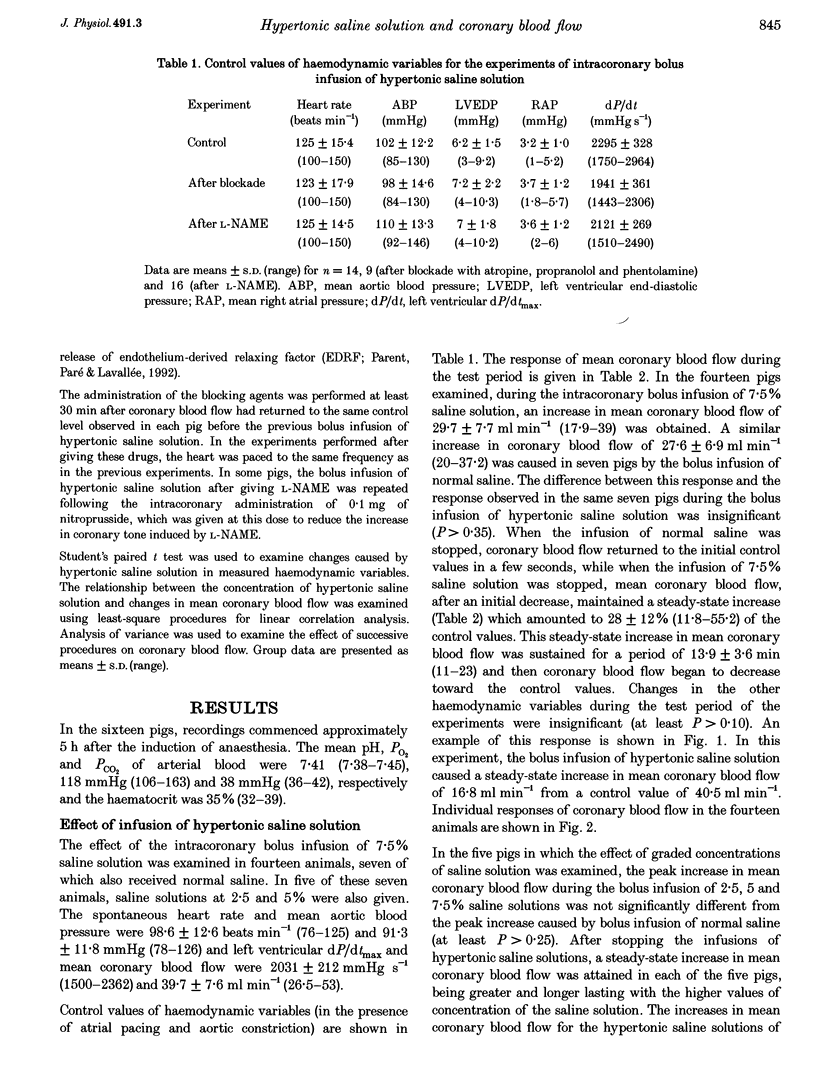
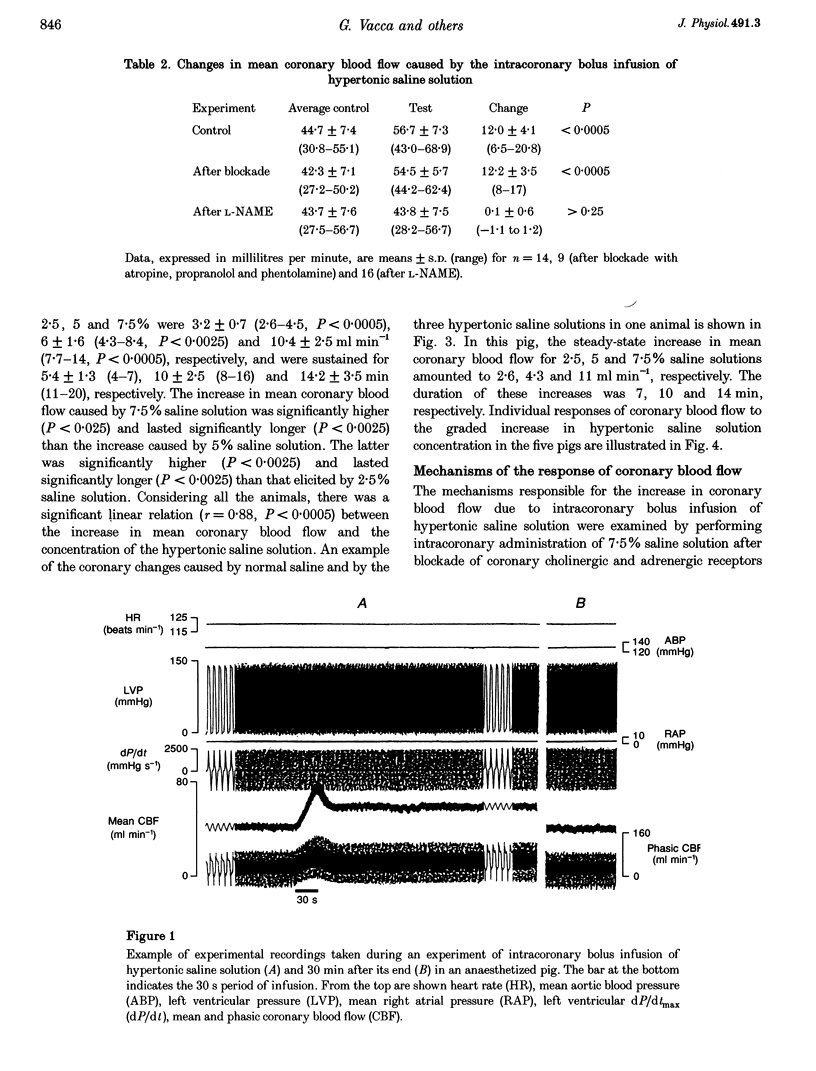
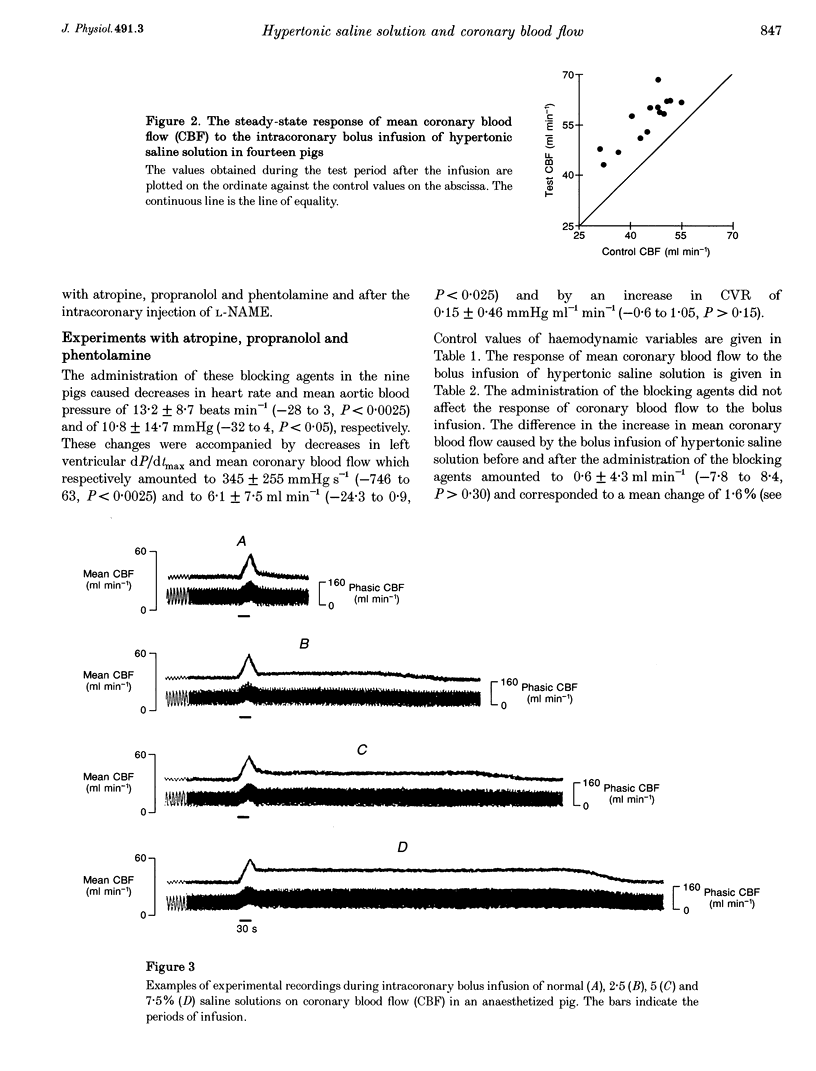
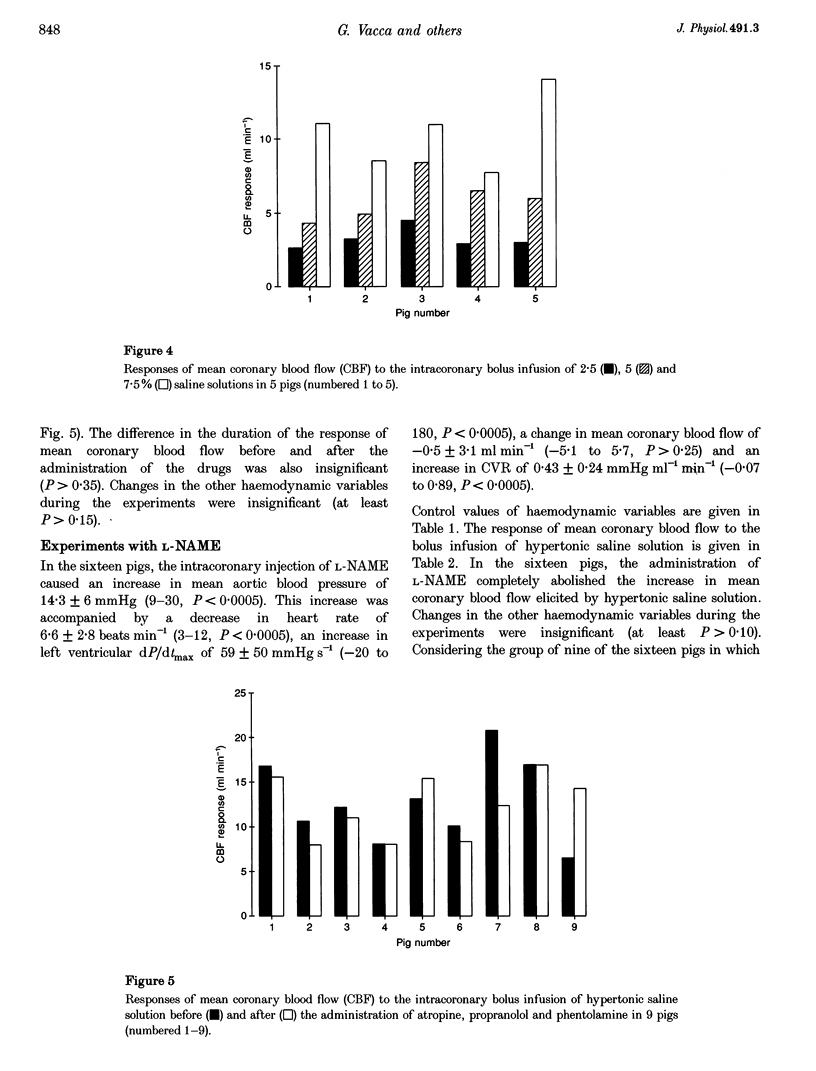
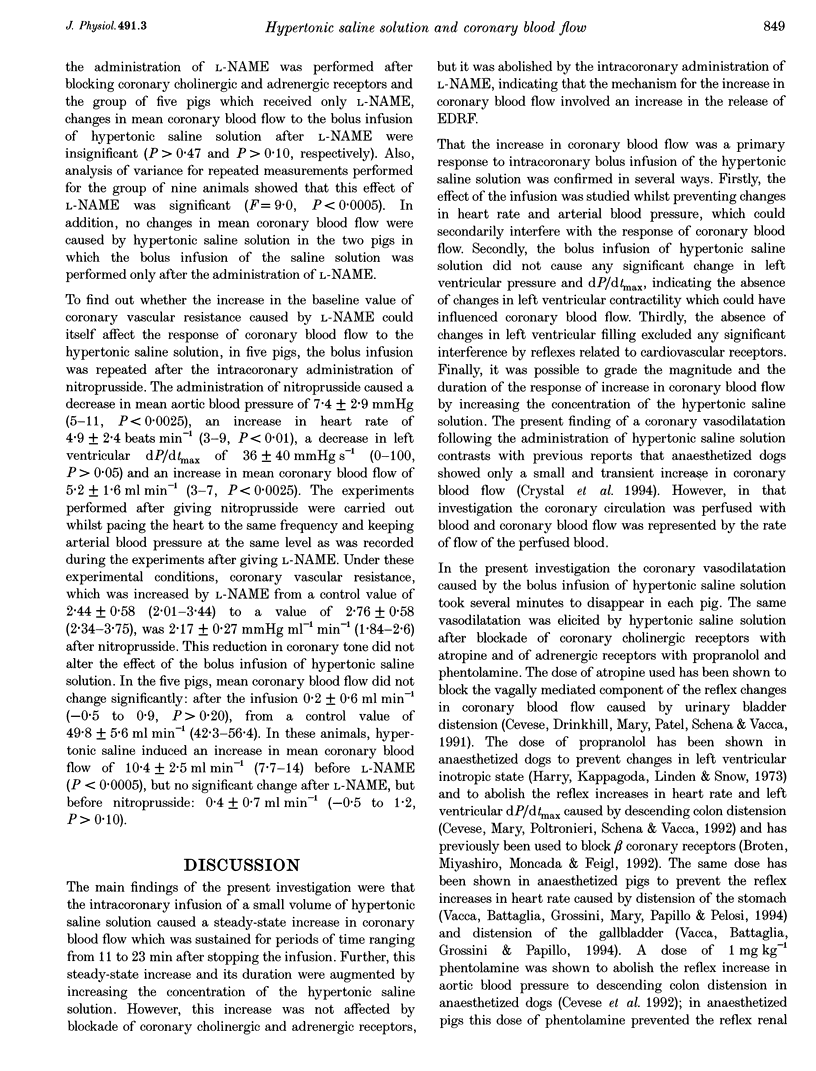
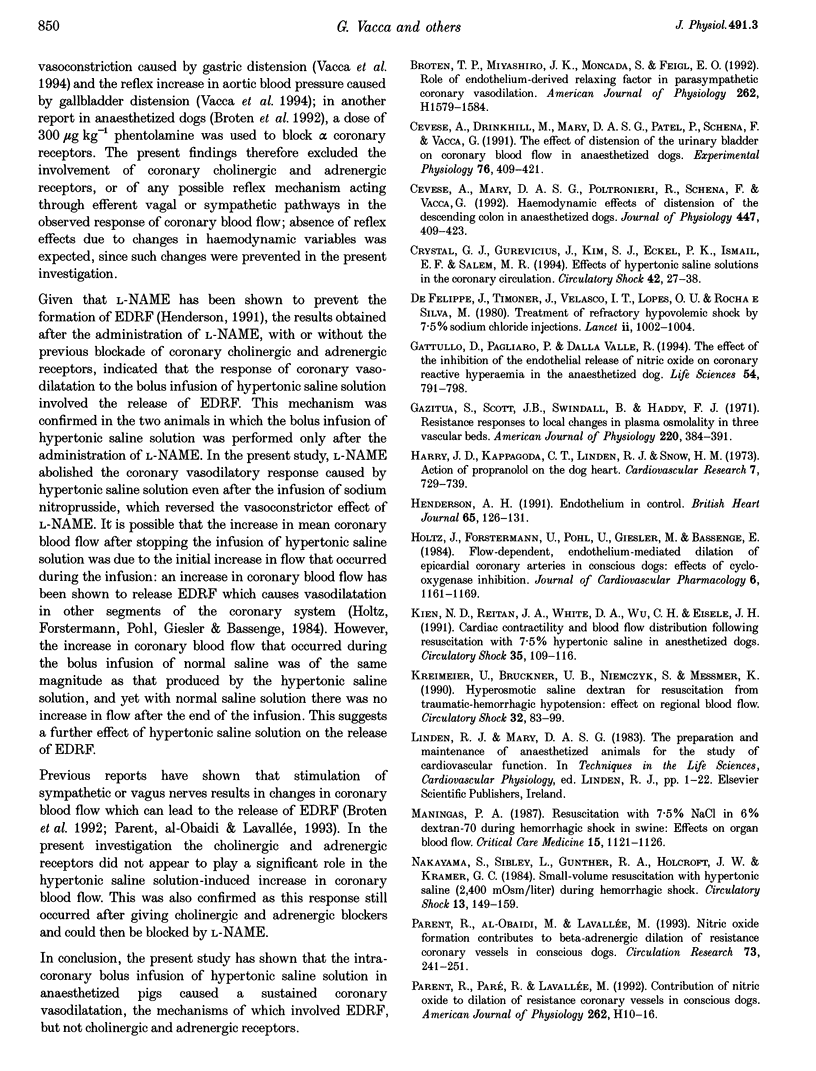
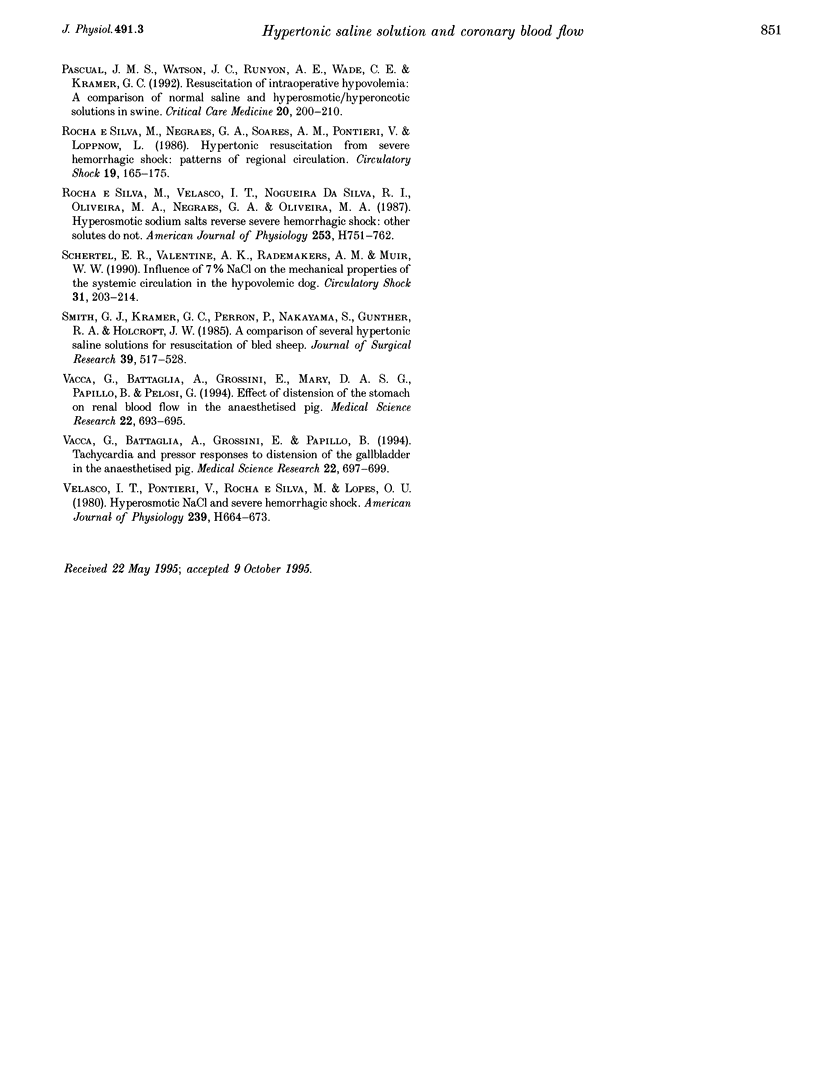
Selected References
These references are in PubMed. This may not be the complete list of references from this article.
- Broten T. P., Miyashiro J. K., Moncada S., Feigl E. O. Role of endothelium-derived relaxing factor in parasympathetic coronary vasodilation. Am J Physiol. 1992 May;262(5 Pt 2):H1579–H1584. doi: 10.1152/ajpheart.1992.262.5.H1579. [DOI] [PubMed] [Google Scholar]
- Cevese A., Drinkhill M., Mary D. A., Patel P., Schena F., Vacca G. The effect of distension of the urinary bladder on coronary blood flow in anesthetized dogs. Exp Physiol. 1991 May;76(3):409–421. doi: 10.1113/expphysiol.1991.sp003508. [DOI] [PubMed] [Google Scholar]
- Cevese A., Mary D. A., Poltronieri R., Schena F., Vacca G. Haemodynamic effects of distension of the descending colon in anaesthetized dogs. J Physiol. 1992 Feb;447:409–423. doi: 10.1113/jphysiol.1992.sp019009. [DOI] [PMC free article] [PubMed] [Google Scholar]
- Crystal G. J., Gurevicius J., Kim S. J., Eckel P. K., Ismail E. F., Salem M. R. Effects of hypertonic saline solutions in the coronary circulation. Circ Shock. 1994 Jan;42(1):27–38. [PubMed] [Google Scholar]
- Gattullo D., Pagliaro P., Dalla Valle R. The effect of the inhibition of the endothelial release of nitric oxide on coronary reactive hyperaemia in the anaesthetized dog. Life Sci. 1994;54(12):791–798. doi: 10.1016/0024-3205(94)00448-x. [DOI] [PubMed] [Google Scholar]
- Gazitùa S., Scott J. B., Swindall B., Haddy F. J. Resistance responses to local changes in plasma osmolality in three vascular beds. Am J Physiol. 1971 Feb;220(2):384–391. doi: 10.1152/ajplegacy.1971.220.2.384. [DOI] [PubMed] [Google Scholar]
- Goble A. J., Hare D. L., Macdonald P. S., Oliver R. G., Reid M. A., Worcester M. C. Effect of early programmes of high and low intensity exercise on physical performance after transmural acute myocardial infarction. Br Heart J. 1991 Mar;65(3):126–131. doi: 10.1136/hrt.65.3.126. [DOI] [PMC free article] [PubMed] [Google Scholar]
- Harry J. D., Kappagoda C. T., Linden R. J., Snow H. M. Action of propranolol on the dog heart. Cardiovasc Res. 1973 Nov;7(6):729–739. doi: 10.1093/cvr/7.6.729. [DOI] [PubMed] [Google Scholar]
- Holtz J., Förstermann U., Pohl U., Giesler M., Bassenge E. Flow-dependent, endothelium-mediated dilation of epicardial coronary arteries in conscious dogs: effects of cyclooxygenase inhibition. J Cardiovasc Pharmacol. 1984 Nov-Dec;6(6):1161–1169. [PubMed] [Google Scholar]
- Kien N. D., Reitan J. A., White D. A., Wu C. H., Eisele J. H. Cardiac contractility and blood flow distribution following resuscitation with 7.5% hypertonic saline in anesthetized dogs. Circ Shock. 1991 Oct;35(2):109–116. [PubMed] [Google Scholar]
- Kreimeier U., Brückner U. B., Niemczyk S., Messmer K. Hyperosmotic saline dextran for resuscitation from traumatic-hemorrhagic hypotension: effect on regional blood flow. Circ Shock. 1990 Oct;32(2):83–99. [PubMed] [Google Scholar]
- Maningas P. A. Resuscitation with 7.5% NaCl in 6% dextran-70 during hemorrhagic shock in swine: effects on organ blood flow. Crit Care Med. 1987 Dec;15(12):1121–1126. doi: 10.1097/00003246-198712000-00009. [DOI] [PubMed] [Google Scholar]
- Nakayama S., Sibley L., Gunther R. A., Holcroft J. W., Kramer G. C. Small-volume resuscitation with hypertonic saline (2,400 mOsm/liter) during hemorrhagic shock. Circ Shock. 1984;13(2):149–159. [PubMed] [Google Scholar]
- Parent R., Paré R., Lavallée M. Contribution of nitric oxide to dilation of resistance coronary vessels in conscious dogs. Am J Physiol. 1992 Jan;262(1 Pt 2):H10–H16. doi: 10.1152/ajpheart.1992.262.1.H10. [DOI] [PubMed] [Google Scholar]
- Parent R., al-Obaidi M., Lavallée M. Nitric oxide formation contributes to beta-adrenergic dilation of resistance coronary vessels in conscious dogs. Circ Res. 1993 Aug;73(2):241–251. doi: 10.1161/01.res.73.2.241. [DOI] [PubMed] [Google Scholar]
- Pascual J. M., Watson J. C., Runyon A. E., Wade C. E., Kramer G. C. Resuscitation of intraoperative hypovolemia: a comparison of normal saline and hyperosmotic/hyperoncotic solutions in swine. Crit Care Med. 1992 Feb;20(2):200–210. [PubMed] [Google Scholar]
- Rocha e Silva M., Velasco I. T., Nogueira da Silva R. I., Oliveira M. A., Negraes G. A., Oliveira M. A. Hyperosmotic sodium salts reverse severe hemorrhagic shock: other solutes do not. Am J Physiol. 1987 Oct;253(4 Pt 2):H751–H762. doi: 10.1152/ajpheart.1987.253.4.H751. [DOI] [PubMed] [Google Scholar]
- Rocha-e-Silva M., Negraes G. A., Soares A. M., Pontieri V., Loppnow L. Hypertonic resuscitation from severe hemorrhagic shock: patterns of regional circulation. Circ Shock. 1986;19(2):165–175. [PubMed] [Google Scholar]
- Schertel E. R., Valentine A. K., Rademakers A. M., Muir W. W. Influence of 7% NaCl on the mechanical properties of the systemic circulation in the hypovolemic dog. Circ Shock. 1990 Jun;31(2):203–214. [PubMed] [Google Scholar]
- Smith G. J., Kramer G. C., Perron P., Nakayama S., Gunther R. A., Holcroft J. W. A comparison of several hypertonic solutions for resuscitation of bled sheep. J Surg Res. 1985 Dec;39(6):517–528. doi: 10.1016/0022-4804(85)90120-9. [DOI] [PubMed] [Google Scholar]
- Velasco I. T., Pontieri V., Rocha e Silva M., Jr, Lopes O. U. Hyperosmotic NaCl and severe hemorrhagic shock. Am J Physiol. 1980 Nov;239(5):H664–H673. doi: 10.1152/ajpheart.1980.239.5.H664. [DOI] [PubMed] [Google Scholar]


